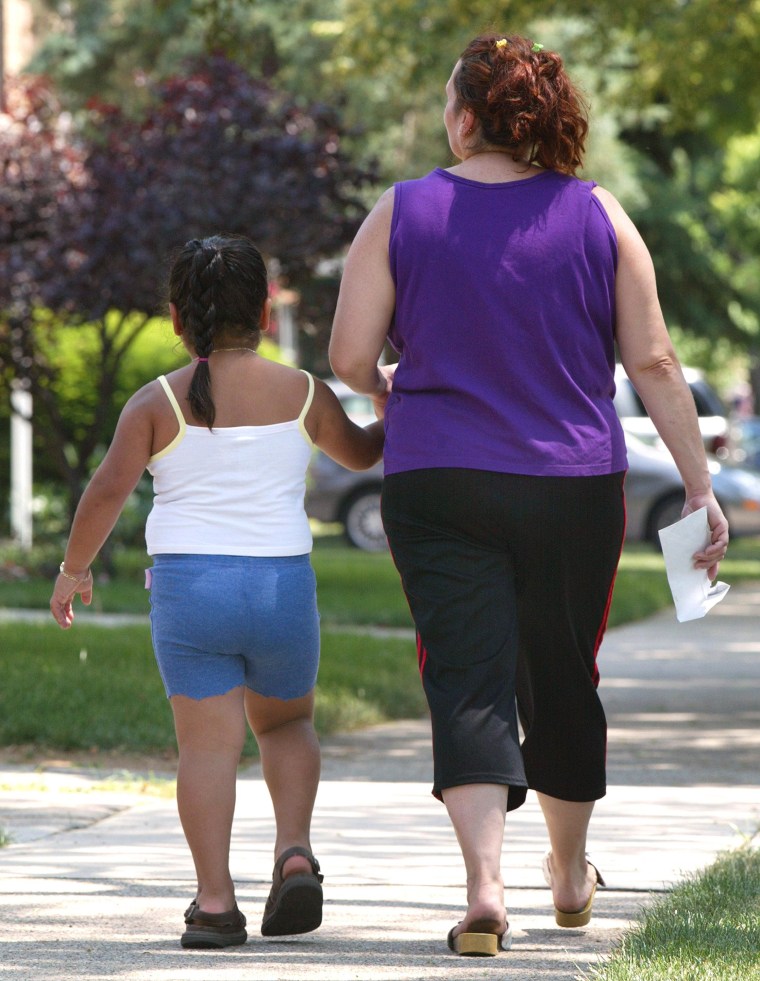Despite studies suggesting that kids in some places are becoming thinner, obesity rates are not budging among children across the country, and the very fattest children may be getting worse, researchers reported Monday.
Data from very large national surveys show that all types of obesity are on the rise in American children, the researchers report in the journal JAMA Pediatrics. Extreme obesity is worsening in some groups, they found.
The findings contradict some earlier analysis that suggested childhood obesity was starting to turn around, said Asheley Cockrell Skinner of the University of North Carolina at Chapel Hill and Dr. Joseph Skelton of the Wake Forest School of Medicine. Earlier this year, the Centers for Disease Control and Prevention reported obesity was starting to drop among preschoolers.
“For overweight and obesity there's generally not any change,” Skinner told NBC News. “There's certainly not the decrease reported before. We also see in the more severe forms of obesity … that it appears to be increasing.”
Skinner and Skelton used the National Health and Nutrition Examination Survey, looking at data on nearly 27,000 children and teens from 1999 to 2012. Nearly a third — 32 percent — are overweight, they found.
“From 2011 to 2012, 17.3 percent of children in the United States aged 2 to 19 years were obese,” they wrote. “Additionally, 5.9 percent of children met criteria for class 2 obesity and 2.1 percent met criteria for class 3 obesity.”
Skinner says there was a surge in obesity in some kids in 2003, and after that rates appeared to fall. In addition, a few cities have reported programs may have worked to help fight obesity in their populations. “Popular media have touted this as evidence of progress in combating childhood obesity,” they wrote.
But it may be an illusion, at least on a national level.
Obesity in kids is not measured the same way as in adults. Children are considered overweight if they are in the 85th to 95th percentile of body mass index, or BMI, for all children their age. Anything over the 95th percentile is obese, and class 2 severe obesity is at 120 percent. Morbid obesity or class 3 is defined as 140 percent.
“For females of all ages combined, class 2 obesity and class 3 obesity have increased significantly over time,” Skinner and Skelton wrote. “In contrast to females, the prevalence rates of obesity and class 3 obesity have increased among adolescent boys aged 12 to 19.”
Skinner gives a for-instance. “An average-height 10 year old boy is about 4 and a half feet tall — at 95 pounds he would be considered obese, and at about 115 pounds he would be considered what we call class 2 obesity,” she said. He’d be morbidly or class 3 obese at 135 pounds.
It’s not hard to see how it happens, Skinner added. “When everything that surrounds a child encourages them to sit down and watch television, it’s easier for families to eat fast food, it’s easier to eat convenience foods which are not as healthy for kids,” she said.
“Some of them are more likely to become obese or overweight in this environment than others are, but all of our kids have for the most part really bad diets and they're not very active.”
NBC News producer Erin Sykes contributed to this story.
